
Are you looking for o fun outdoor activities for preschoolers at home? If so, then look no further. These amazing outdoor activities to do at home will keep your preschooler busy and having so much fun that they won’t want to come back inside.
This post was created by Marra Robert, OTD, OTRL and contains affiliate links.

Hi! My name is Marra and I’m a mama and a pediatric occupational therapist who has years of experience working with children with different developmental needs and helping their parents navigate the ups and downs of child development.
I loved being a support person for parents learning about child development, sensory processing, and their child’s individual needs. Outdoor activities are some of my most common recommended activities for families of busy, energetic preschoolers.
This post is all about the 25 best outdoor activities for preschoolers at home that are not only beneficial for development but that are also so much fun!

Benefits of outdoor activities for preschoolers at home
Childhood is a time of wonder, exploration, and growth, and there’s no better place for young children to experience these elements than the great outdoors.
For preschoolers, engaging in outdoor activities isn’t just about play; it’s a vital aspect of their development across multiple domains. From physical health to cognitive skills, social interactions to emotional well-being, the benefits of outdoor play are profound and far-reaching.
In today’s fast-paced digital age, where screens often dominate leisure time, prioritizing outdoor experiences for preschoolers is crucial. Outdoor play provides a multisensory environment that stimulates all the senses, encourages movement and physical activity, and fosters a deep connection with nature.
It offers a dynamic and ever-changing backdrop for learning, exploration, and creativity, nurturing holistic development in young children.
Research has consistently shown the myriad benefits of outdoor activities for preschoolers at home. Physical activity in natural settings helps children develop gross and fine motor skills, coordination, balance, and strength.
The open spaces and diverse terrains of outdoor environments offer rich opportunities for sensory exploration, from feeling different textures to movement to observing changes in weather and seasons.
Outdoor activities for preschoolers at home supports cognitive development by sparking curiosity, problem-solving skills, and critical thinking.
Natural settings stimulate children’s imagination and creativity, prompting them to invent games, stories, and scenarios that enhance their cognitive flexibility and imaginative play.
Socially, outdoor activities for preschoolers at home encourages cooperation, communication, and collaboration among preschoolers. It provides a natural setting for peer interactions, sharing, taking turns, and negotiating play rules.
Outdoor spaces also promote inclusive play, allowing children of varying abilities and backgrounds to engage in activities together, fostering empathy, understanding, and social skills.
Emotionally, spending time outdoors has been linked to reduced stress levels, improved mood, and increased feelings of well-being in children.
The freedom, space, and sensory richness of outdoor environments offer opportunities for sensory regulation, emotional expression, and self-regulation skills development.
Outdoor activities for preschoolers at home are not just recreational for preschoolers; they are essential for their overall development and well-being.
By encouraging children to explore, play, and learn in natural settings, we provide them with a foundation for a lifetime of healthy habits, environmental stewardship, and a deep appreciation for the world around them.
In the following sections, we’ll explore 25 engaging outdoor activities for preschoolers at home fostering development across physical, cognitive, social, and emotional domains.
THE TOP 25 outdoor activities for preschoolers at home
Nature Scavenger Hunt
A nature scavenger hunt is an excellent outdoor activities for preschoolers at home that encourages the exploration of their natural surroundings. You can create a list of items like leaves, rocks, flowers, insects, feathers, and more.
This activity not only encourages children to observe and discover different elements of nature but also helps them develop attention to detail and concentration skills.
As they search for the items on their list, they learn about different textures, shapes, colors, and sizes. Additionally, a scavenger hunt fosters a sense of adventure and curiosity about the environment, laying the foundation for future scientific exploration.
Sidewalk Chalk Art

Drawing and coloring with sidewalk chalk are excellent outdoor activities for preschoolers at home that providesa a sensory-rich experience.. The act of holding and manipulating chalk strengthens their fine motor skills, including hand-eye coordination and grip strength.
Encouraging children to create elaborate designs, trace their hands, write letters or numbers, or draw imaginative scenes promotes creativity and self-expression.
Sidewalk chalk art also offers opportunities for social interaction and collaboration when children work together on a larger art project. It’s a fun way to blend artistic expression with outdoor play.
Obstacle Course
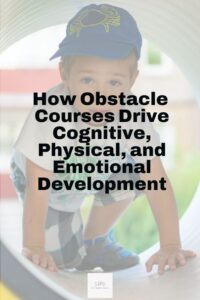
Obstacle courses are definitely my favorite outdoor activities for preschoolers at home. Designing an obstacle course allows preschoolers to engage in physical challenges that promote gross motor skills, coordination, balance, and spatial awareness.
You can include activities like crawling through tunnels, jumping over hurdles, balancing on beams, hopping on stepping stones, and throwing balls into targets. Each obstacle encourages children to use different muscle groups and develop agility and strength.
Completing the course boosts their confidence and perseverance, teaching them the value of practice and determination. Obstacle courses also offer opportunities for problem-solving and decision-making as children figure out the best strategies to navigate each challenge.
Outdoor Storytime
Taking storytime outdoors creates a multisensory experience for preschoolers. They can listen to stories while feeling the warmth of the sun, hearing birds chirping, and smelling the fresh air.
Reading books about nature, animals, or outdoor adventures enhances their understanding of the world around them. Encourage interactive storytelling by asking questions, making predictions, or inviting children to act out parts of the story.
Outdoor storytime stimulates imagination, language development, and cognitive skills such as sequencing and comprehension. It also fosters a love of literature and a connection to nature’s beauty.
Water Play
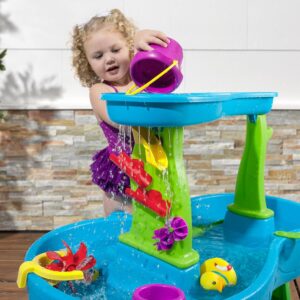
Water play is not only fun but also incredibly beneficial outdoor activities for preschoolers at home. Providing opportunities for children to splash, pour, scoop, and experiment with water introduces them to scientific concepts such as volume, buoyancy, and gravity.
Water play stimulates tactile sensations and hand-eye coordination as children manipulate water toys, fill containers, and observe the flow of water. It also promotes social skills like sharing, taking turns, and cooperative play when children engage in water activities together.
Whether it’s a water table, a small pool, or water play in nature (like playing in a creek), the experience is both educational and enjoyable.
Gardening
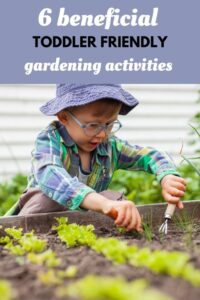
Involving preschoolers in gardening activities offers a hands-on learning experience that connects them to nature and teaches valuable life skills. Children learn about plant life cycles, seeds, soil, watering, and the importance of sunlight for growth.
Planting seeds and watching them sprout fosters a sense of responsibility and nurtures patience as children wait for plants to grow. Gardening also introduces concepts of sustainability, environmental stewardship, and the interconnectedness of living things.
It provides opportunities for sensory exploration (touching soil, smelling flowers), encourages curiosity about the natural world, and instills a sense of pride and accomplishment when children see their plants thrive.
BIRD WATCHING
Bird watching are wonderful outdoor activities for preschoolers at home that .introduces them to the diversity of bird species and the joys of observing wildlife.
Setting up bird feeders or creating a bird-friendly environment in your backyard attracts birds for children to observe. Provide binoculars or a simple bird identification guide to help them learn about different bird colors, sizes, beak shapes, and behaviors.
Encourage children to listen for bird calls and mimic them, enhancing auditory discrimination and memory skills.
Bird watching promotes patience, attention to detail, and a sense of wonder as children discover the beauty and intricacies of the avian world. It also encourages empathy and respect for animals.
Biking or Scooter Riding
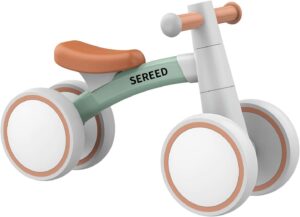
Riding bikes or scooters outdoors is an excellent way for preschoolers to engage in physical activity while developing coordination, balance, and spatial awareness.
Learning to pedal, steer, and brake improves gross motor skills and strengthens leg muscles. Riding with peers or family members promotes social interaction, communication, and cooperation as children navigate shared spaces and follow safety rules.
Biking or scootering on different surfaces (pavement, grass, gravel) provides sensory input and challenges children to adapt their movements. It’s a fun and healthy outdoor activity that encourages a lifelong love of cycling and active play.
Picnic
Having a picnic outdoors are such fun outdoor activities for preschoolers at home. It combines social, sensory, and culinary experiences for preschoolers.
Children can help prepare simple picnic foods like sandwiches, fruit skewers, or veggie sticks, fostering independence and food exploration.
Eating outdoors exposes them to new tastes, textures, and smells while encouraging healthy eating habits. Picnics also promote social skills such as sharing, conversation, and table manners as children interact with family members or friends.
The outdoor setting adds sensory elements like sunshine, breezes, and natural sounds, enhancing the overall dining experience. Picnics create lasting memories and positive associations with outdoor gatherings and communal meals.
Nature Art
Creating art with natural materials encourages preschoolers to explore their creativity while connecting with the environment. Collect items like leaves, flowers, pinecones, shells, or sticks during nature walks or scavenger hunts.
Use these materials to make collages, sculptures, mandalas, or nature-inspired paintings. Nature art activities promote fine motor skills as children manipulate materials, glue, cut, and arrange objects.
They also foster sensory exploration as children touch, smell, and observe natural textures and colors. Nature art encourages children to see beauty in the world around them and inspires a sense of wonder and imagination.
Bug Hunt
Exploring the world of bugs through bug hunts are exciting and educational outdoor activities for preschoolers at home. Provide magnifying glasses and small containers for collecting insects like ladybugs, butterflies, ants, beetles, or caterpillars.
Encourage children to observe bugs’ movements, colors, and habitats. Discuss basic insect anatomy, life cycles, and the role of insects in the ecosystem.
This activity promotes scientific curiosity, observation skills, and a respect for nature. Children learn about biodiversity, develop empathy for living creatures, and gain an understanding of the interconnectedness of all living things.
Outdoor Music
Creating music outdoors using everyday objects fosters creativity, rhythm, and sensory exploration. Provide items like pots, pans, wooden spoons, containers filled with rice or beans, and simple percussion instruments.
Encourage children to experiment with different sounds and beats, creating their own musical compositions. Outdoor music activities promote auditory discrimination, fine motor skills (when using instruments), and coordination as children clap, drum, or shake to the rhythm.
Singing songs or making up rhymes further enhances language development and phonemic awareness. Outdoor music sessions are joyful, interactive, and a celebration of children’s innate musicality.
Shadow tracing
Shadow tracing is a fun and educational activity that introduces children to concepts of light, shadow, and perspective. Choose a sunny day and place objects like toys, leaves, or hands on a flat surface (sidewalk, paper, or cardboard).
Encourage children to trace the outline of the shadows using chalk, markers, or pencils. Discuss how shadows change in size and shape depending on the position of the sun.
This activity promotes spatial awareness, observation skills, and understanding of light sources. Children also explore artistic concepts as they experiment with shadow shapes and patterns. Shadow tracing encourages creativity, scientific inquiry, and outdoor exploration.
Yoga
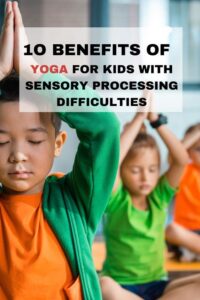
Practicing yoga outdoors combines physical activity with mindfulness, relaxation, and connection to nature. Teach preschoolers simple yoga poses such as downward dog, tree pose, butterfly pose, or sun salutations.
Encourage them to breathe deeply, focus on body awareness, and find balance. Yoga promotes flexibility, strength, coordination, and body confidence. It also teaches children relaxation techniques for stress relief and emotional regulation.
Practicing yoga outdoors allows children to feel grounded and connected to the natural environment. The sounds of birds, rustling leaves, and fresh air enhance the sensory experience and promote a sense of calm and well-being.
CLOUD WATCHING
Cloud watching is a peaceful and imaginative activity that encourages mindfulness and observation skills. Find a comfortable spot outdoors, such as a grassy area or a blanket under a tree.
Lie down and look up at the sky, observing the shapes, colors, and movements of clouds. Encourage children to describe what they see and use their imagination to identify cloud shapes (animals, objects, characters).
Discuss how clouds form, the different types of clouds, and weather patterns. Cloud watching promotes relaxation, curiosity about the natural world, and creativity. It fosters a sense of wonder and encourages children to slow down and appreciate simple moments of beauty.
BALLOON GAMES
Playing games with balloons outdoors is a dynamic and engaging way to promote physical activity, coordination, and social interaction. Inflate balloons and play games like balloon volleyball, keep-up (keeping the balloon from touching the ground), or balloon toss (throwing and catching balloons).
These activities develop hand-eye coordination, gross motor skills, and agility. Balloon games also encourage teamwork, cooperation, and communication as children work together to keep the balloon in play.
The lightweight nature of balloons makes them accessible and safe for active play outdoors. Balloon games are energetic, laughter-filled, and promote a sense of camaraderie among children.
NATURE COLLAGE
Creating collages with natural materials sparks creativity, artistic expression, and appreciation for the environment. Collect leaves, flowers, twigs, feathers, shells, and other natural objects during outdoor explorations.
Provide glue, paper, cardboard, or canvas for children to arrange and glue the materials into unique artworks. Encourage them to experiment with patterns, textures, colors, and compositions.
Nature collages promote fine motor skills (handling small objects, using glue), sensory exploration (touching natural textures), and creativity. They also foster environmental awareness and a sense of connection to the natural world.
Displaying nature collages outdoors adds beauty to outdoor spaces and showcases children’s creativity.
NATURE SENSORY BIN
Sensory bins filled with natural materials provide hands-on exploration and sensory stimulation for preschoolers. Fill bins or containers with materials like sand, water, rice, dried leaves, pinecones, shells, and rocks.
Hide small objects or toys within the sensory materials for children to discover through touch and manipulation. Sensory bins promote tactile exploration, sensory integration, and fine motor skills as children sift, pour, scoop, and search for hidden items.
They also encourage imaginative play and storytelling as children create scenes and narratives using the sensory materials. Nature sensory bins are versatile, engaging, and offer endless opportunities for sensory-rich play outdoors.
OUTDOOR COOKING
Engaging in cooking activities outdoors introduces children to food preparation, healthy eating habits, and sensory exploration. Set up a simple outdoor kitchen area with a table, pots, pans, utensils, and ingredients like fruits, vegetables, grains, and herbs.
Children can participate in washing, chopping, mixing, and assembling foods (e.g., making fruit salads, vegetable skewers, or homemade pizzas). Cooking outdoors allows children to experience different textures, tastes, and smells while developing fine motor skills and hand-eye coordination.
It also promotes independence, creativity, and a sense of accomplishment as children contribute to meal preparation. Outdoor cooking experiences foster a connection to nature’s bounty and encourage appreciation for fresh, wholesome foods.
BUBBLE PLAY
Blowing bubbles and playing with bubble solutions outdoors is a delightful sensory activity that promotes motor skills, visual tracking, and imaginative play. Provide bubble wands, containers of bubble solution, and encourage children to blow bubbles of various sizes and shapes.
Children can chase and pop bubbles, try to catch them on bubble wands, or create bubble art by blowing bubbles onto paper. Bubble play promotes hand-eye coordination, breath control, and oral motor skills as children blow and manipulate bubbles.
It also stimulates visual tracking and spatial awareness as children follow the movement of bubbles through the air. Bubble play outdoors is a simple yet engaging activity that brings joy and wonder to outdoor playtime.
Rock Painting
Painting rocks with vibrant colors and designs is a creative and expressive outdoor art activity for preschoolers. Collect smooth rocks of various sizes and shapes from nature or purchase them from a craft store.
Provide washable acrylic paints, paintbrushes, and other decorating materials like markers, glitter, or stickers. Encourage children to paint patterns, animals, flowers, inspirational messages, or abstract designs on the rocks.
Rock painting promotes fine motor skills (holding brushes, painting details), creativity, and self-expression. It also encourages children to appreciate natural materials as art mediums and provides opportunities for outdoor decoration or gifts.
Displaying painted rocks outdoors adds color and whimsy to outdoor spaces and showcases children’s artistic talents.
Leaf Rubbings
Leaf rubbings are a simple yet engaging art and nature activity that introduces children to textures, patterns, and botanical exploration. Collect a variety of leaves with different shapes and textures, such as maple, oak, or fern leaves.
Place a leaf (vein-side up) under a piece of paper or thin fabric and use crayons or colored pencils to gently rub over the leaf. The leaf’s texture and outline will transfer onto the paper, creating beautiful imprints. Encourage children to experiment with different colors and layering techniques for artistic effects.
Leaf rubbings promote fine motor skills (holding and rubbing crayons), sensory exploration (feeling leaf textures), and artistic expression. Children learn about leaf shapes, veins, and patterns while creating nature-inspired artwork.
This activity also fosters observation skills as children compare and contrast different leaves. Displaying leaf rubbings outdoors or using them for nature-themed crafts adds a touch of natural beauty to any outdoor setting.
Nature Sorting
Nature sorting is a hands-on activity that combines exploration, classification, and early math skills. Collect a variety of natural items such as leaves, pinecones, rocks, seashells, feathers, and acorns.
Provide sorting trays, baskets, or containers labeled with categories such as color, size, texture, or type of item. Encourage children to sort the natural objects into the appropriate categories based on the chosen criteria.
Nature sorting promotes cognitive skills such as classification, comparison, and organization. Children develop critical thinking skills as they decide how to categorize each item.
They also strengthen fine motor skills (handling and sorting objects) and language skills (describing attributes of objects). Nature sorting activities can be adapted for different levels of complexity, making them suitable for various age groups.
This activity fosters a deeper appreciation for nature’s diversity and encourages children to explore and categorize the world around them.
Stargazing
Stargazing is a fascinating outdoor activity that introduces children to the wonders of the night sky and astronomy. Choose a clear night with minimal light pollution and find a comfortable spot outdoors, such as a backyard, park, or camping site.
Use a stargazing app or a star chart to identify constellations, planets, and celestial objects visible in the night sky. Encourage children to observe the stars, planets, and patterns in the sky.
Stargazing promotes curiosity, scientific inquiry, and appreciation for the vastness of the universe. Children learn about constellations, star patterns, and the movement of celestial bodies.
They develop spatial awareness and observational skills as they identify and track stars and planets. Stargazing also sparks imagination and storytelling as children create their own myths and stories inspired by the night sky. It’s a magical experience that encourages wonder, curiosity, and a lifelong interest in astronomy.
Outdoor science experiment
Outdoor science experiments promote inquiry-based learning, critical thinking, and experimentation skills. Children learn about scientific principles such as cause and effect, observation, prediction, and experimentation.
They also develop problem-solving skills as they analyze results and draw conclusions. Outdoor settings provide natural contexts for hands-on exploration and allow children to engage with science in a fun and memorable way.
